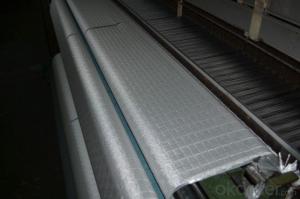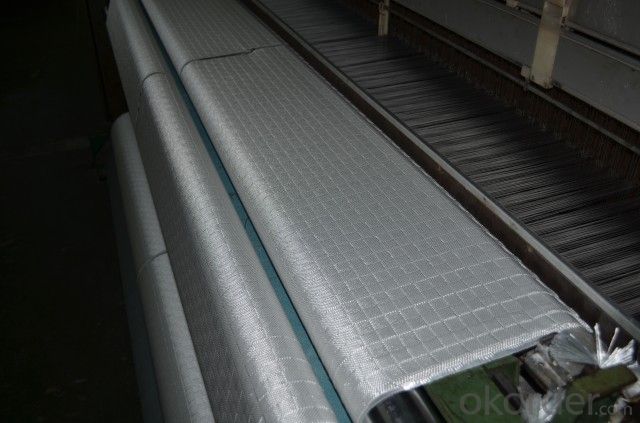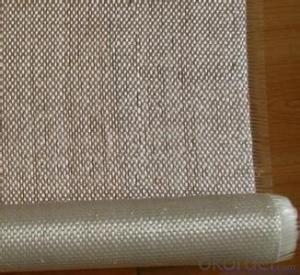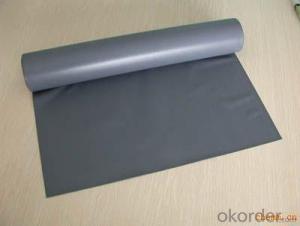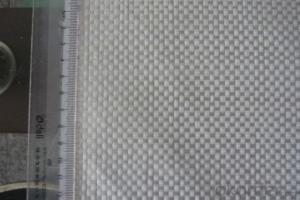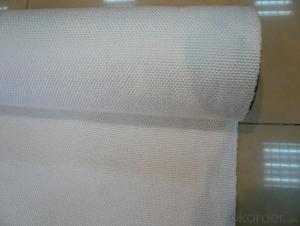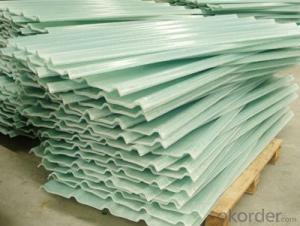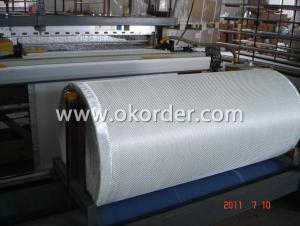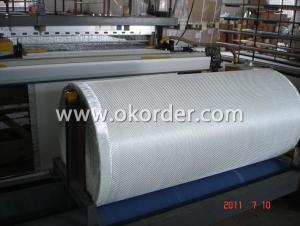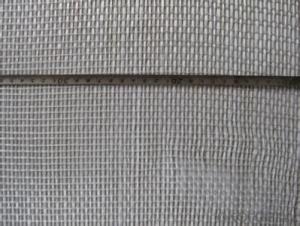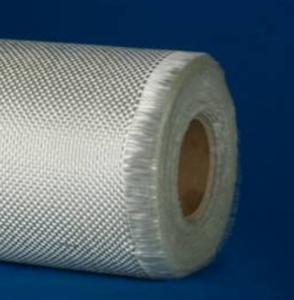High Quality Fiberglass Fabrics with Good Price
- Loading Port:
- Shanghai
- Payment Terms:
- TT OR LC
- Min Order Qty:
- 10 m.t.
- Supply Capability:
- 100 m.t./month
OKorder Service Pledge
OKorder Financial Service
You Might Also Like
FIBERGLASS YARN is made from different glass fiber filaments, which are then gathered and twisted into one individual yarn. Characteristics :consistent linear density, Application: Mainly used for weaving various reinforce, insulation, anticorrosion, heat insulation fabric and sleeves etc. We can supply different shapes and roll weight, such as milk bobbin, 3.5kg big and 1.0g /0/5kg small paper bobbin |
style | Weave pattern | Yarn description | Count(in) | Weight (g/m2) | Thickness (mm) | |
warp | fill | |||||
116 | plain | ECD450 1/2 | ECD450 1/2 | 60 x 60 | 108 | 0.095 |
2116 | plain | ECE225 1/0 | ECE225 1/0 | 60 x 58 | 105 | 0.09 |
2165 | plain | ECE225 1/0 | ECG150 1/0 | 60 x 52 | 123 | 0.10 |
7628 | plain | ECG75 1/0 | ECG75 1/0 | 44 x 31 | 200 | 0.18 |
3732 | twill | ECG37 1/0 | ECG37 1/0 | 48 x 32 | 430 | 0.43 |
3784 | satin | ECG37 1/2 | ECG37 1/2 | 44 x 35 | 870 | 0.80 |
| Remark: The above data are only the representative products, there are different threads, such as 1/3,2/2,2/3,1/5……etc. Also have C-Glass yarn. |
- Q: Can fiberglass fabric be used for heat-resistant sleeves?
- Yes, fiberglass fabric can indeed be used for heat-resistant sleeves. Fiberglass fabric is known for its excellent heat-resistant properties, as it can withstand high temperatures without melting or deforming. It has a high melting point and is resistant to fire, making it an ideal choice for applications that require protection from heat, such as heat-resistant sleeves. Fiberglass fabric can effectively insulate against heat and provide a barrier between the user and hot surfaces, making it a popular material for heat-resistant sleeves in industries such as welding, metalworking, and firefighting. Additionally, fiberglass fabric is lightweight, durable, and flexible, allowing for ease of movement and comfort while providing heat protection.
- Q: Can fiberglass fabric be used for making filters for air purifiers?
- Yes, fiberglass fabric can be used for making filters for air purifiers. Fiberglass fabric is known for its excellent filtration properties, making it an ideal material for capturing and trapping airborne particles such as dust, pollen, pet dander, and other allergens. It can effectively remove these contaminants from the air, improving indoor air quality and promoting a healthier living environment. Additionally, fiberglass fabric is durable and resistant to high temperatures, making it suitable for long-term use in air purifiers. However, it is important to note that fiberglass can release tiny particles when damaged or mishandled, which can be harmful if inhaled. Therefore, it is crucial to handle and maintain fiberglass filters with care to prevent any potential health risks.
- Q: Can fiberglass fabric be painted?
- Yes, fiberglass fabric can be painted.
- Q: How is fiberglass fabric used in the production of insulation panels?
- Fiberglass fabric is commonly used in the production of insulation panels due to its excellent thermal insulation properties and durability. It is woven from glass fibers and provides a lightweight yet strong material that is highly resistant to heat, moisture, and chemicals. In the production of insulation panels, fiberglass fabric is typically used as the primary insulation material. It is usually layered between two facing materials to create a sandwich-like structure. The facing materials can be made of various materials such as aluminum foil, paper, or other fabrics. The fiberglass fabric acts as the core insulation layer, providing a barrier to heat transfer. Its unique composition traps air pockets within its fibers, which significantly reduces the conduction of heat. This results in excellent thermal insulation properties, making it a preferred choice for insulation panels. Furthermore, fiberglass fabric is also used as a reinforcing component in insulation panels. It adds strength and stability to the panels, preventing them from sagging or losing their shape over time. This reinforcement ensures that the insulation panels maintain their insulating properties even when exposed to external pressures or vibrations. Additionally, fiberglass fabric is known for its fire-resistant properties. It does not burn or release toxic gases when exposed to fire, making it a safe and reliable choice for insulation panels. This is crucial in ensuring the overall safety of buildings, as it helps prevent the spread of fire and provides valuable time for evacuation. Overall, fiberglass fabric plays a vital role in the production of insulation panels by providing excellent thermal insulation, reinforcement, and fire resistance. Its versatility and durability make it an ideal material for various applications, from residential buildings to industrial facilities, contributing to energy efficiency and comfort.
- Q: Can fiberglass fabric be used for clothing?
- Indeed, fiberglass fabric has the potential to serve as clothing material, but it is not widely embraced or favored for everyday attire. The primary application of fiberglass fabric lies within the aerospace, automotive, and construction industries, as it possesses exceptional attributes. Specifically, it is renowned for its remarkable strength, durability, and resistance to heat. While these qualities render fiberglass fabric suitable for protective clothing in specific professional settings, such as firefighting or welding, it does not fare well as regular clothing due to its rigidity and potential discomfort when in contact with the skin. Furthermore, fiberglass fabric lacks breathability and insulation, further limiting its appropriateness for clothing purposes. Instead, materials like cotton, wool, silk, as well as synthetic fibers such as polyester or nylon, are more commonly utilized for clothing due to their comfort, breathability, flexibility, and aesthetic appeal. These materials offer a broader array of options for fashion and everyday wear, while still ensuring the wearer's comfort and protection.
- Q: How is fiberglass fabric coated?
- Different methods are used to coat fiberglass fabric, depending on its intended use and specific requirements. One commonly used method is resin coating, where a liquid resin is applied to the fabric. The resin can be either epoxy or polyester based and is usually mixed with a catalyst to start the curing process. The fabric is then soaked with the resin and excess resin is removed to ensure an even coat. Another method is silicone coating, where a layer of liquid silicone is applied to the fabric. Silicone coatings provide excellent heat resistance and flexibility, making them suitable for insulation or protective covers. Occasionally, fiberglass fabric may be coated with other materials like polyurethane or PTFE (polytetrafluoroethylene), commonly known as Teflon. Polyurethane coatings offer improved abrasion resistance and flexibility, while PTFE coatings provide excellent non-stick properties and high temperature resistance. The coating process can be done using different techniques, including dip coating, spray coating, or roller coating. Dip coating involves immersing the fabric into a tank filled with the coating material, while spray coating evenly distributes the coating onto the fabric surface using a spray gun. Roller coating applies the coating in a controlled manner by passing the fabric through a set of rollers. Overall, the coating process is essential for enhancing the performance and durability of fiberglass fabric, allowing it to be utilized in various industries such as aerospace, automotive, construction, and marine.
- Q: How does fiberglass fabric perform in UV resistance?
- Fiberglass fabric is highly resistant to UV radiation. It does not degrade or deteriorate when exposed to prolonged sunlight, making it an ideal choice for outdoor applications requiring UV resistance.
- Q: What about laying glass fiber cloth on polyurethane waterproof coating?
- Polyurethane waterproof coating house strength is poor, mainly rely on glass fiber cloth this skeleton.
- Q: Does the construction of insulation alkali resistant glass fiber cloth need fixing with thermal insulation nail?
- The alkali resistant mesh cloth does not need to be fixed (direct pressed into the anti cracking mortar surface), and galvanized steel wire mesh needs to be fixed with an anchor bolt.
- Q: How is fiberglass fabric used in the production of thermal gloves?
- Fiberglass fabric is commonly used in the production of thermal gloves due to its excellent insulation properties. This type of fabric is made by weaving together fine strands of glass fibers, resulting in a material that is lightweight, durable, and has high heat resistance. In the production of thermal gloves, fiberglass fabric is typically used as an inner lining or as an additional layer to enhance the insulation capabilities of the gloves. This fabric acts as a barrier between the cold external environment and the hand, preventing heat loss and keeping the hands warm. The glass fibers in the fabric are excellent thermal insulators, meaning they do not conduct heat well. This property helps to trap the body heat generated by the hand, creating a layer of warmth and effectively insulating the hands from the cold. Additionally, fiberglass fabric is resistant to moisture, which is particularly useful in thermal gloves as it helps to keep the hands dry and prevents the growth of bacteria or mold. This makes the gloves more comfortable to wear for extended periods and reduces the risk of skin irritation or infections. Furthermore, fiberglass fabric is known for its strength and durability. This makes it ideal for use in thermal gloves, as it can withstand frequent use and resist wear and tear. It also helps to maintain the shape and structure of the gloves, ensuring a longer lifespan. In summary, fiberglass fabric is used in the production of thermal gloves due to its excellent insulation properties, moisture resistance, and durability. It helps to keep the hands warm, dry, and protected from the cold, making it an essential component in the manufacturing process.
Send your message to us
High Quality Fiberglass Fabrics with Good Price
- Loading Port:
- Shanghai
- Payment Terms:
- TT OR LC
- Min Order Qty:
- 10 m.t.
- Supply Capability:
- 100 m.t./month
OKorder Service Pledge
OKorder Financial Service
Similar products
Hot products
Hot Searches
Related keywords
